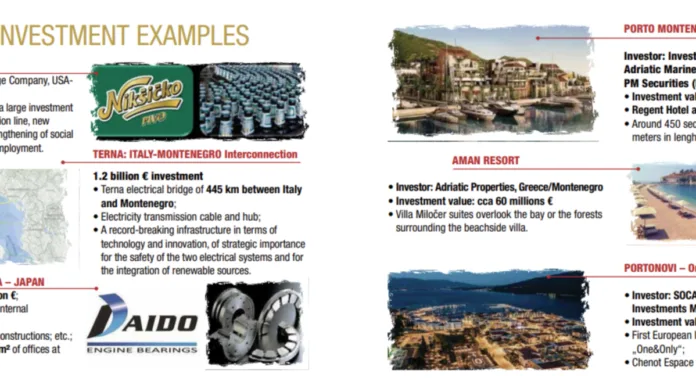Montenegro’s New Government Debts Resurface Past Obligations
The Milojka Spajić government has incurred debt exceeding a billion euros since its formation on October 31 of last year. Next year, it will need to repay nearly a billion euros in existing debts.
In the near future, the government will face a cash shortfall due to the elimination of employee pension insurance contributions.
There have been no significant investments during Spajić’s term, apart from some announced projects.
According to economic analyst Oleg Filipović, Montenegro lacks a strategy for debt repayment without resorting to refinancing or new borrowing, as reported by Radio Free Europe.
“The current borrowing situation is concerning. I had hoped this government would adopt different standards regarding investor attraction and public debt reduction,” states Filipović.
Borrowing Trends
Shortly after its formation, the Milojka Spajić government borrowed 109 million euros from eight commercial banks in Montenegro.
It subsequently raised an additional 50 million euros through a public record issuance.
In March, the government issued bonds in international markets totaling 687 million euros.
In October, four new loan contracts were approved, amounting to approximately 200 million euros.
The government’s plan includes further borrowing efforts.
The Ministry of Finance has indicated that by issuing bonds, it aims to secure 50 million euros by the year’s end, with higher interest rates than those available from commercial banks.
This ministry also clarified that up to 1.15 billion euros could be borrowed this year, intended to cover old debts, finance the capital budget, and establish fiscal reserves.
It was confirmed that Montenegro is expected to repay close to a billion euros by 2025:
“Considering our expected debt obligations in the coming year, approximating 830 million euros in principal and around 165 million in interest, the Ministry is preparing to secure the necessary funds.”
The Solution Lies in Investments, but …
Alongside the repayment of nearly a billion euros, the Montenegrin budget will encounter a significantly reduced revenue stream from November due to the cessation of many pension insurance contributions.
To increase salaries, the government has redirected its contributions from the pension fund to net salaries as of October 1.
Filipović highlighted that the government anticipates recovering the budget deficit caused by this change through increased tourism taxes, services, and gaming revenues.
However, he questions whether these measures will be sufficient:
“We will only see if these funds can cover the budget shortfall. Next year, the Pension Fund will be short by 500 million euros, with no investments to generate returns.”
“This will be a challenge for this year and the years to come,” Filipović warns.
He stresses that the government needs a plan to finance 30 to 40 percent of its obligations from internal sources rather than through refinancing:
“For this to be feasible, an investment plan must be created. We lack that, aside from announcements of upcoming projects. The government’s priority should be to attract significant investors and determine the incentives needed to invest in Montenegro.”
He emphasizes that all countries in the region are vying for large companies, offering attractive terms and benefits. Currently, Montenegro has only one profitable and functional industry.
“That is tourism. We lack supporting industries such as software development, artificial intelligence, cybersecurity, or financial services.”
Charges from URA and PES Regarding Indebtedness
The opposition movement “Hooray,” led by former Prime Minister Dritan Abazović, criticized the borrowing of over a billion euros as an “Absolute Negative Record” for Spajić’s government:
“This places our public finances in a state of instability, all to fulfill populist promises that serve personal interests rather than the public good.”
They noted that there have been no substantial advances on the grand capital projects that Prime Minister Spajić had announced.
The Movement of Europe has referred to these criticisms as manipulative, countering that public debt has decreased and state finances remain stable, as affirmed by international financial institutions.
“Abazović’s government also adopted a fiscal strategy in July 2023 allowing Montenegro to borrow over two billion euros, as the former DPS government left behind old debts,” PES stated.
Investor Brochure
In an effort to attract investors to Montenegro, the government released a brochure on October 21.
This 11-page brochure, filled with images of the country’s natural beauty, is labeled “Montenegro: The Road to Prosperity 2024” and is presented as a “key resource for investors and all those interested in Montenegro’s economic development”.
A key focus is on investment opportunities in energy, including solar power plants, hydropower stations, and windmills.
In the agricultural sector, potential investors are encouraged to engage in wood processing, as forests cover 60 percent of Montenegro’s territory.
Tourism represents another sector where foreign investments are sought.
The government also showcased examples of successful international investment projects in Montenegro.
These include the nautical complex Porto Montenegro, Luštica Bay, Mamula, Porto Novi, the Podmorje cable, and the windbreaker at Boljare, along with the privatization of Jugopetrol and the Nikšić Brewery.
All of the projects mentioned were developed during the Democratic Party of Socialists’ time in power before 2020.
Notably, the only investment realized in the last four years was a four-kilometer-long cable car between Njeguši and Kotor.
Assessments by International Organizations
Meanwhile, the IMF announced a 6 percent growth in the Montenegrin economy over the last year, with a projected growth rate of 3.7 percent.
They also noted that the current government has effectively managed public debt over the past few years, as stated in the State Department’s investment climate report published in mid-July this year.
The World Bank predicts that the government budget deficit will reach 4.1 percent next year.
In mid-October, it was indicated that public debt will reach 64 to 65 percent of gross domestic product (GDP) over the next three years.
As of the end of June this year, public debt stood at 4.5 billion euros, which is equivalent to 62 percent of GDP.


